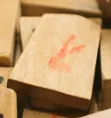December 13, 2023
Shogi Pieces: The Heart and Soul of the Game
Explore the Significance of Shogi Pieces and Learn Their Importance in Japanese Chess
Discover the Significance of Shogi Pieces in Japanese Chess and Learn Their Importance in the Game. Dive into the world of Shogi, an ancient board game, and explore its unique set of pieces. Uncover the secrets of the King, the most vital piece in Shogi, and understand the strategic challenges it brings to the game.
Shogi, also known as Japanese chess, is an ancient board game that has been played in Japan for centuries. One of the key elements of this captivating game is its unique set of pieces. In this article, we will explore the various shogi pieces and their significance in the game.
The King: The Most Important Piece on the Board
Lets start with the most important piece in shogi — the King. The King piece, or Ōshō in Japanese, is represented by a golden general. It is the ultimate goal of the game to checkmate the opponents King. Unlike in chess, the King is not allowed to move outside a x area called the castle. This constraint adds an extra layer of strategy and protection to the game.
Generals, Rooks, and Bishops: Powerhouses on the Board
Shogi features two types of generals: the gold general and the silver general. The gold general can move one space in any direction, making it a versatile piece. On the other hand, the silver general can move one space diagonally or forward, making it an effective attacking and defensive unit.
The rook and bishop in shogi are similar to their counterparts in chess. The rook, called Hisha in Japanese, can move horizontally or vertically any number of empty squares. The bishop, known as Kakugyō, moves diagonally any number of empty squares. Their unrestricted movements make them incredibly powerful pieces in the game.
Pawns: The Backbone of the Army
Pawns, or Fuhyō, are the smallest and most abundant pieces on the shogi board. They can only move forward one space at a time but have the ability to promote into more powerful pieces if they manage to reach the opponents territory. Promoted pawns, or Tokin, gain the ability to move and capture in a broader range, adding an element of surprise and flexibility to the game.
Promotion and Demotion: Unlocking Hidden Powers
One of the fascinating aspects of shogi is the ability to promote and demote certain pieces. Whenever a non-King piece reaches the opponents territory, it can be promoted, granting it new movement abilities. Similarly, if a promoted piece gets captured, it reverts back to its original form. This dynamic feature expands the tactical possibilities and keeps players engaged throughout the game.
Strategic Deployment and Capture: The Dance of Shogi
The shogi board starts with each player deploying their pieces symmetrically, apart from the pawn rows. There are various opening strategies and tactics to gain an advantage right from the start. As the game progresses, capturing opponent pieces becomes crucial to weaken their defenses and seize control. Each move in shogi requires careful consideration, making it an intellectual and thrilling experience for players of all levels.
Conclusion: The Artistry and Complexity of Shogi Pieces
The shogi pieces form the foundation of this captivating game, each with its own distinct movements and abilities. From the powerful generals to the nimble pawns, and the strategic promotions that unlock hidden powers, every piece plays an essential role in shaping the outcome of the game. Embracing the complexities and artistry of shogi pieces is key to mastering this wonderful game that has stood the test of time.
Discover the Intricate World of Shogi and Its Unique Pieces








